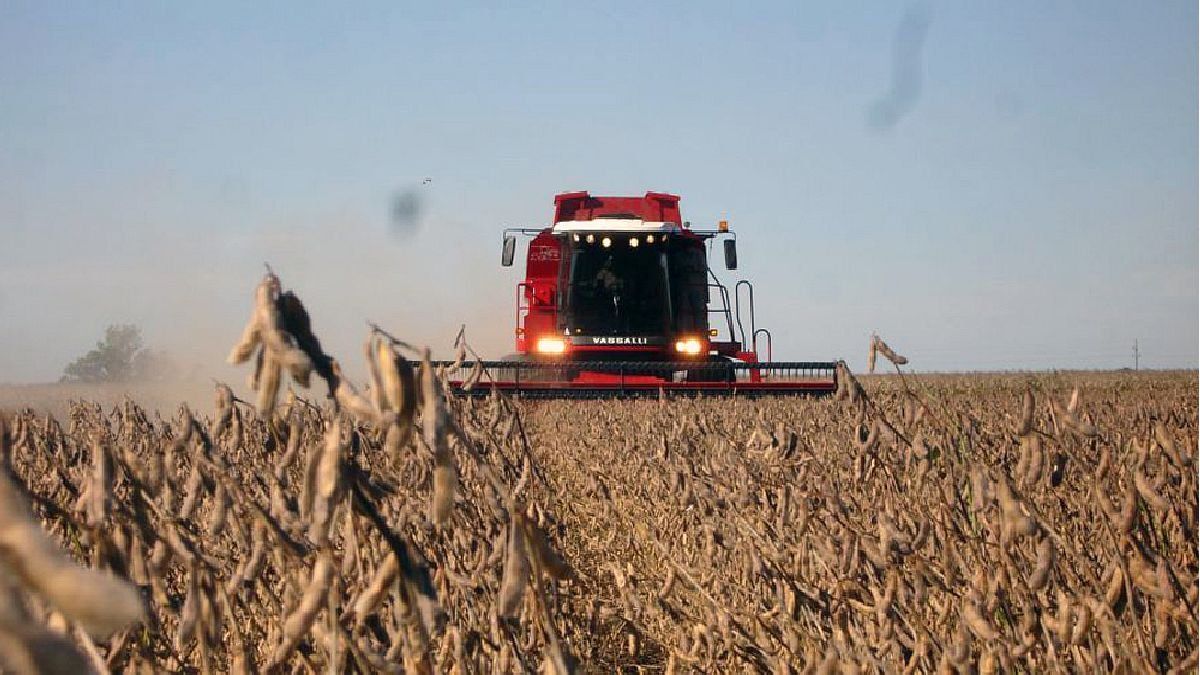Something that can improve this scenario is a rise in the prices of soy Y corn that strongly compensate for the drop in quantities. At present, a campaign of 128.5 million tons of soybeans, when the US Department of Agriculture report expected 139 million tons of soybeans in mid-January and 145 million a few months ago. In the case of Argentina, they expected 47 million tons according to the Americans and in our country the forecasts are below the 40 million of tons. Between the two countries, the production gap would be more than 20 million of tons.
drought.jpg
This sharp drop in production leads us to think that the price of soybeans could be around values of US$550 to US$600 for the year 2022values not very different from those of the second quarter of 2021. We will see if prices can compensate for the drop in production.
In matters of corneverything suggests that Brazil would not have a large drop in production, the United States estimates some 115 million tons, and private estimates from Brazil would be around 113 million of tons. In Argentina they expected 55 million tons of corn production, the United States estimated 54 million tons and, according to private estimates, we could reach 48 million of tons.
CORN2.jpg

The price of corn became very spicy since exporters have declared exports for the year 2022 for 22.4 million tons and would have purchased 14.4 million tons, therefore, the market would be firm since shipments have to be completed in the second quarter of the year and getting merchandise would become very onerous. The improvement in the price of corn would not compensate for the decrease in production, with which the income of dollars and withholdings would be less than in 2021.
Argentina in the year 2022 will have less quantity of soybeans and corn harvested and it would be in doubt that the rise in prices could compensate for the losses produced, despite the fact that soybeans show a very upward trend at this juncture.
Producers are hesitant to liquidate current holdings of soybeans and corn, because the official dollar is at very low price levels. As of January 31, official dollar quoted in $105.02, this implies a rise of 20.3%. If we compare this rise in the official dollar versus an annual inflation rate of 50.9%, this does not invite us to liquidate the accumulated soybean and corn holdings. On the other hand, soybeans in the market available in pesos showed a variation of 44.3% annual in the last 12 months, much less than inflation. Corn in the same period of time increased only 38.6%which is also not attractive to sell taking into account the great inflation of retail prices.
The government has been devaluing the official dollar at a higher rate in the last three months: in October it devalued 1%, in November 1.2%, in December 1.8% and in January 2.2%. Inflation in October was 3.5%, in November 2.5% and in December 3.8%. Everything suggests that inflation in January would be 4%.
While the exchange rate rises at a very slow rate, the structural cost of companies, tied to the evolution of internal prices, grows exponentially. To this we must add a disproportionate rise in inputs, what farmers can collect for the harvested merchandise would not be able to cover the structure costs or the inputs for the next campaign: Be careful, you can cut the wheel of production. The exchange rate is behind the floor by 30%.
Dollar Cries.jpg

Courtesy: Dailymotion
Argentina abuses with high tax pressure and low exchange rate, the results are visible. While in the year 2014/15 in our country they were harvested 60 million tons and in Brazil 97 million of tons of soybeans, the perspectives for the coming campaign show us a perspective of 128.5 million tons in Brazil and less than 40 million tons in Argentina. It is clear that withholdings and a low exchange rate affect production, Brazil kept a large part of our market.
conclusion
- A miracle would have to happen for the price of soybeans to exceed US$600 and corn US$300 per ton in Chicago, in this way the same amount of dollars and collection of withholdings would enter Argentina as in the year 2021 .
- It should not be ruled out that in 2022 the world could grow more than expected, corn and soybeans could be in demand to produce fuels, changing the traditional equation of supply and demand, driving prices to new highs. It looks difficult, but not impossible, sometimes miracles exist.
- An increase in the exchange rate of 20% per year is unsustainable versus structural expenses in companies that climb to levels above 50% per year.
- In the month of February, rains are needed to alleviate the damage caused by the drought in the state of the crops. The fall of the Paraná River hinders the logistics of our agricultural exports, it is an issue that is not on the front page of the newspapers, but it does a lot of damage to the profitability of the affected sectors.
- Argentina needs dollars to be able to grow, with this exchange rate policy the objectives of increasing the stock of reserves, assisting the productive sectors with dollars and being able to pay the opposing debts, whether public or private, will not be achieved.
- Reserves are at US$37.56 billion, the real ones are no longer positive. Courage, the fine print of the agreement with the IMF is missing, the trip to China to request a swap of US$ 5,000 million and the approval of the agreement with the IMF in Congress.
Source: Ambito




